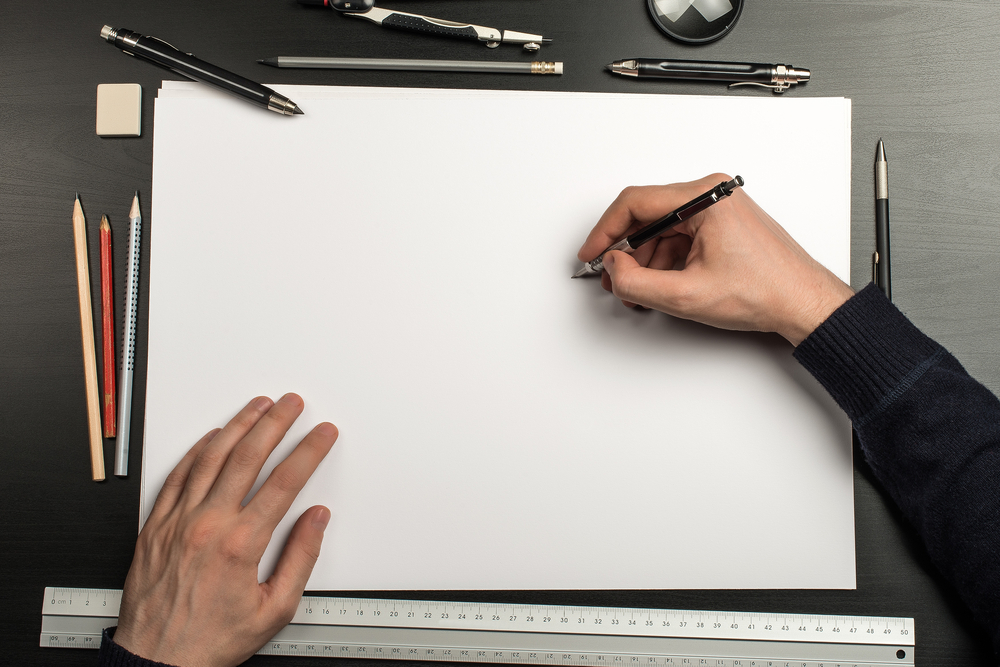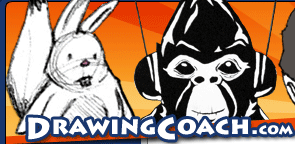- What to Consider With Online Drawing Courses
- The 15 Best Online Drawing Courses 2024
- 1. Best Beginners Course: The Ultimate Drawing Course – Beginner to Advanced
- 2. Best Landscape Course: Environment Art School – Complete Perspective Drawing Course
- 3. Best Comics Course: Drawing Comics – A Beginner’s Guide
- 4. The Complete Figure Drawing Course HD
- 5. Best Cartoon Course: Animation Foundations – Drawing Cartoon Characters
- 6. Gesture – An Introduction to the Art of Figure Drawing
- 7. Drawing Foundations – Sketching the Landscape
- 8. Best Anatomy Course: Anatomy for Figure Drawing – Mastering the Human Figure
- 9. Best for Watercolor: Watercolor Your World – A Meditative Approach to Painting Landscapes
- 10. Best Free Course: How to Draw – Free Beginner’s Course
- 11. Drawing Comics – Anatomy and Figure Drawing
- 12. Drawing Foundations – Figure
- 13. Sketching of Landscape Drawing
- 14. How to Make a Comic Book
- 15. Best Resource: How to Draw Lessons
- Online Drawing Courses FAQ
- Extra
- Drawing to a Close
Putting pen or pencil to paper is something everyone and anyone can do, and the blank page presents an endless opportunity. Whether you want to become the next Picasso, outline a design you’re creating, or you just want to draw for fun and relaxation, it’s open to everybody.
The tricky part is getting good at it. This takes practice and that is where courses come in. Learning draws out those hidden talents you never knew you had, bringing them to the surface and allowing them to flourish. Doing this from your computer or mobile as you draw has never been easier.
In this guide, we’ll take a quick look at how you can go about that, before taking a closer look at the various drawing courses available online. We then finish up with some helpful supplementary info and by answering the most frequently asked questions.
What to Consider With Online Drawing Courses
Here are the main factors you should consider when deciding between online drawing courses.
What Do You Want From Your Art?
Nobody wants the same thing from their art; this would make it boring. With a world of creativity waiting out there, you need to ask yourself what you want from your drawing on a personal level.
Is it merely a hobby to pass the time? After all, drawing can be hugely beneficial as a relaxation technique. On the other hand, it may be that you want illustrations to help enhance your pre-existing work, such as clothes designs. It might even be that you’re interested in becoming a professional artist and are seeking opportunities to further your skill-set and career.
When it comes to art, the choices are endless, and considering what you want will help determine the direction you take when learning.
What’s Your Style Preference?
Everyone has their perfect picture in mind, and there are many different ways to achieve this, along with numerous different styles. Whether it’s focusing on portraits, creating an idyllic scene, or a combination of the two, you need to discover your own mode of expression, some of which we’ve covered here.
- Figure drawing: this consists of drawing people, creating the outline and proportions of the body, and then applying detail to it, such as muscles, anatomical structure, and face.
- Landscape drawing: here, you’ll typically set a scene, whether it’s an outdoor meadow or indoors sketching a bowl of fruit, and this will usually involve perspective.
- Comics/Illustration: usually applied to animation, this bright, colorful style can be open to interpretation, as it’s not constrained by reality.
- General: a combination of all the different styles, which many people will want to consider in the long run, bringing the elements together in one unique drawing.

The Drawing Course Layout
Depending on the course, most of the classes will, by and large, use on-screen tutorials to help guide you. This instructive approach is what you’ll mostly find online, with lessons that offer a set of examples and then exercises to do yourself. Whether it’s taking a sketch-pad outside to draw the landscape or sketching a subject, it will all depend on what type of classes you’re taking.
Art Tools at the Ready
Traditionally, drawing has simply been a case of putting pencil to paper, but there’s a lot more to consider when bringing your sketch to life.
- Drawing Tools: here, you just want a sharp pencil and sketch pad to draw on. Erasers are also useful, along with rulers, to help with perspective.
- Paint and Color: this can potentially help elevate your drawings, using paints such as watercolor or oil to help bring out the color.
- Digital Drawing: technology such as drawing tablets and digital design programs like Photoshop can also help you draw effectively, and some courses may incorporate these.
Length of the Course
Like any other skill, your drawing will only improve with more practice, which needs consideration when looking at course length. A prolonged course isn’t always the best, though, as you may find some simply repeating themselves when you could just be doing the work yourself.
What you want from any course are guidelines and ideas that open up new avenues to head off and try on your own. That and feedback on your work is always useful.
Before we dive into our detailed reviews, here’s a snapshot look at the best courses available.
Drawing Course Comparisons
| Course Title | Platform | Course Level | Course Length | Course Style | Course Rating |
|---|---|---|---|---|---|
| The Ultimate Drawing Course – Beginner to Advanced | Udemy | Beginner to Advanced | 11h | General | 5 of 5 |
| Environment Art School – Complete Perspective Drawing Course | Udemy | Beginner to Intermediate | 10h | Landscape | 5 of 5 |
| Drawing Comics – A Beginner’s Guide | Skillshare | All Levels | 2h 2m | Comics/Illustration | 5 of 5 |
| The Complete Figure Drawing Course HD | Udemy | Beginner to Advanced | 92h | Figure | 5 of 5 |
| Animation Foundations – Drawing Cartoon Characters | Intermediate | 5h 22m | Comics/Illustration | 4.5 of 5 | |
| Gesture – An Introduction to the Art of Figure Drawing | Skillshare | Intermediate | 11h 3m | Figure | 4.5 of 5 |
| Drawing Foundations – Sketching the Landscape | Intermediate | 3h 2m | Landscape | 4.5 of 5 | |
| Anatomy for Figure Drawing – Mastering the Human Figure | Udemy | Beginner to Advanced | 65h | Figure | 4 of 5 |
| Watercolor Your World – A Meditative Approach to Painting Landscapes | Skillshare | All Levels | 42m | Landscape | 4 of 5 |
| How To Draw Lessons | Drawing Coach | Beginner to Intermediate | Indefinite | General | 4 of 5 |
| Drawing Comics- Anatomy and Figure Drawing | Udemy | Beginner to Intermediate | 7h | Comics/Illustration | 4 of 5 |
| Drawing Foundations – Figure | Beginner | 2h 29m | Figure | 3.5 of 5 | |
| Sketching of Landscape Drawing | Udemy | Beginner to Advanced | 1h 30m | Landscape | 3.5 of 5 |
| How to Make a Comic Book | Coursera | All Levels | 16h | Comics/Illustration | 3.5 of 5 |
| How to Draw – Free Beginner’s Course | Rapid Fire Art | All Levels | Indefinite | General | 3.5 of 5 |
The 15 Best Online Drawing Courses 2024
1. Best Beginners Course: The Ultimate Drawing Course – Beginner to Advanced
- 11h $109.99
- Course Highlights
- Guides you towards finding your own style
- Level: Beginner to Advanced
- Style: General
Why we like it
This comprehensive art course works well at preparing you for your journey as a creative, finding your own unique style and approach.
Stepping into the world of art for the first time can be somewhat daunting, especially when facing all the greats from throughout history. This course aims to ease the transition, providing you with a gateway to becoming an artist yourself, whether it's a career move or just for fun.
The course covers numerous styles and techniques with professional tutoring, taking you through from beginner to advanced.
Preparation Required
You'll primarily be focusing upon just the drawing here, so there won't be any need for paints and colors of any kind. All you'll require is paper, pencil, ruler, and eraser, as you follow the techniques presented on-screen. Make sure you have space, too, as you'll be covering subjects such as perspective, meaning plenty of room is ideal when following tutorials.
The Bigger Picture
Overall the course is clear and concise, as it allows beginners to feel welcome, but it could do with some more precise instructions surrounding a few of the techniques used. You can go back over lessons as you have complete access, but some newcomers may find themselves lagging a bit at times with the explanations being brief.
The course's structure is simple and straightforward, though, making it the ideal stepping-stone for anyone looking to get into art for the first time.
Pros
- Wide array of topics covered
- Simple and straightforward
- Accessible to beginners
- Professional tutors
Cons
- Instructions sometimes brief
- Could use clearer technique demonstrations
2. Best Landscape Course: Environment Art School – Complete Perspective Drawing Course
- 10h $149.99
- Course Highlights
- A crash-course on mastering perspective
- Level: Beginner to Intermediate
- Style: Landscape
Why we like it
Perspective is a skill that needs mastering just like everything else, and that’s what this course achieves in well-structured detail.
Giving your art depth is extremely important, especially when building a rich and vibrant landscape. This course aims to provide you with the tools to achieve just that, allowing you to create a 3D effect for the viewer while also offering you more room to fill it with detail.
Accessible to both beginners and those at an intermediate level, it's an intensive course targeted towards those looking to build upon perspective as a specific drawing skill.
Preparation Required
Digital tools are used in the course examples, but you can opt for pencil and paper. The iPad Pro is featured, too, providing tutorials for both traditional and digital tools.
The Bigger Picture
Some added features could benefit the course, such as applying color to the landscapes and showing how that works with perspective. At times, the lessons are a little too focused on just perspective and actually showing how to apply the landscape beyond making it 3D would be hugely helpful.
When it comes down to it though, the course is structured well with numerous resources provided throughout, making it one of the better landscape classes currently out there.
Pros
- Focused and intensive
- Plenty of resources provided
- Easily accessible
- Well structured
Cons
- Could feature more color
- Needs more surrounding context
3. Best Comics Course: Drawing Comics – A Beginner’s Guide
- 2h 2m Included with Premium Subscription
- Course Highlights
- Use comic art to spark imagination
- Level: Beginner to Advanced
- Style: Comics/Illustration
Why we like it
This bright and lively course is well-managed by a professional instructor, showing you the many stages of bringing your art to life through the medium of comics.
The comic's medium is a rich and varied one, and there's a whole wealth of opportunity for the artist to explore their imagination. This course goes about preparing you for that journey, as its professional instructor takes you through a series of different techniques, offering a lot of insight along the way.
It's a simple to follow and easily accessible course that's worth your time if you're looking to explore this particular artistic medium further.
Preparation Required
While you can work with the art tools you feel most comfortable with, the course itself uses Clip Studio Paint. It's probably best you try with both styles, working with pen and paper, along with digital tools, as you need to gain some level of versatility if you're just starting.
The tutor Ira Marcks is known for his colorful style and producing graphic novels, so be prepared for a bright and lively course.
The Bigger Picture
Firstly, there could be a few more practice examples featured here, as it's always helpful to work on your skills yourself. Looking directly at the medium of comic-books too would've also been useful, showing how you can apply your skills as an artist, but there's the chance to do that at a later date.
Putting that to one side, though, it is overall a quality course for comic artists, with plenty of material that's concise and engaging, delivered in a friendly manner.
Pros
- Friendly and engaging
- Plenty of insight
- Succinct with a lot of material
- Simple to follow
Cons
- Needs more practice examples
- Could explore the work of comic books
4. The Complete Figure Drawing Course HD
- 92h $44.99
- Course Highlights
- An A-Z on figure drawing
- Level: Beginner to Advanced
- Style: Figure
Why we like it
What this course doesn’t cover on figure drawing probably isn’t worth knowing. It includes an extensive range of lessons and videos to provide a deeper understanding of the subject.
Learning about figure drawing is an important skill, especially when combining every element of the human body. This course does exactly that, in what is a long and extensive series, and has become an industry-standard worldwide.
On top of that, the tuition itself is exceptionally knowledgeable, covering pretty much everything regarding figure drawing.
Preparation Required
This course's primary focus is drawing, so you'll only need the bare essentials when it comes to traditional art tools. Using a pencil, sketchbook, eraser, and sharpener, you'll be focusing on drawing for the duration of the entire course. Most of the classes use on-screen tutorials, so some room to draw will also be useful, but apart from that, it's a relatively simple setup.
The Bigger Picture
At times the pacing can skip a bit, speeding ahead of the user, making it slightly tricky to keep up with for newcomers, but you can go back at any time. The audio is often not too great either, and it could benefit from subtitles, especially if English is your second language.
For the most part, this is hugely focused, though, mainly looking at human anatomy as you learn how to create a realistic and detailed figure of your own.
Pros
- Extremely extensive
- Nothing left out
- Very focused
- Knowledgeable, professional tuition
Cons
- Audio sometimes patchy
- Pacing can be quite fast
5. Best Cartoon Course: Animation Foundations – Drawing Cartoon Characters
- 5h 22m $39.99
- Course Highlights
- Offers a flexible approach to learning animation drawing
- Level: Intermediate
- Style: Comics/Illustration
Why we like it
There are many different styles when it comes to animation, and that’s where this course excels, covering a lot of ground, allowing you to find your approach to character drawing.
Creating a distinctive cartoon character can elevate your artwork, especially when looking to see that it stands out from everything else. This course features an experienced tutor with a background in Disney and Don Bluth, as he aims to help you do just that. From the hair to the eyes, he brings your colorful and lively creations to life through this well-communicated series of lessons.
Preparation Required
The course itself opts for a Wacom tablet for the m part. Flexible, you can use any illustration program you feel comfortable with, or you can just opt for paper and pen. Not just drawing the characters, you will also be coloring them, so make sure you have a good selection of whatever you choose.
The Bigger Picture
One factor that could benefit the course would be to see your character designs put into the larger context of a scene. Focused solely on the characters themselves, it can be myopic at times, but it more that follows up on the course title's promise.
The exercises featured are practical and helpful, as it offers a detailed breakdown of all the characters, guiding the artist every step of the way.
Pros
- Experienced tutor
- Bright and colorful
- Detailed character breakdown
- Practical exercises
Cons
- No character context
- A little narrow
6. Gesture – An Introduction to the Art of Figure Drawing
- 11h 3m Included with Premium Subscription
- Course Highlights
- A detailed look at figure drawing
- Level: Intermediate
- Style: Figure
Why we like it
Personality is essential when figure drawing, as it’s the gestures that give each character their individuality, which is what this focuses on, helping you bring out the subtleties.
Getting the shape and form when drawing is always essential, as you want to make sure you fully capture the details and the gestures. There's a lot of personality in each pose, and capturing it is a skill in itself. Friendly and easy to follow, this course helps you with just that, giving clear instructions in a detailed and in-depth set of classes.
Preparation Required
Focused mainly on figure drawing, you'll want to set aside a traditional set of art tools to get you through the course. A quality selection of pencils, along with paper and sharpener, will be all that's needed to complete the lessons. While it's online, you want to stay away from digital art tools here, as it's about the drawing process from the eye to hand, creating lifelike figures and people.
The Bigger Picture
Variation with its figures would be useful, as there aren't too many male models provided here. The same applies to the amount of different muscles being shown as well; it could stand to cover a lot more, from the abs to the back and legs.
All in all, though, it does offer plenty of useful examples throughout, giving a lot of practice exercises to help start you off.
Pros
- Friendly and easy-going
- Detailed and in-depth
- Clear instructions
- Helpful and useful examples
Cons
- Needs more variation
- Could feature different muscles
7. Drawing Foundations – Sketching the Landscape
- 3h 2m Included with Premium Subscription
- Course Highlights
- Teaches the fundamentals of landscape and perspective
- Level: Intermediate
- Style: Landscape
Why we like it
Capturing the mood of a landscape is a goal of any artist, and this is what this particular course sets about doing, showing you how to bring a setting to life through sketching.
These classes look at improving your drawing skills on the go, capturing the landscape in the moment as you set off into the great outdoors. The experienced tutor leading this course, Will Kemp, takes you through drawing a landscape, then taking it home and painting it. The course has a clear and professional presentation, taking you from the sketchpad to the canvas.
Preparation Required
As the title says, much of this course takes place outdoors, so you need to prepare for that. Taking your sketchbook and pencils, you'll be heading off outside to capture the landscape in a fast and efficient manner. Once you get back, you can then prepare your larger sheet for painting, along with a good set of watercolors and paints.
The Bigger Picture
If you're not interested in watercolor, that could be a problem here, as the course is more geared towards turning your sketches into paintings. That said, there are plenty of techniques to get the most from your drawings, even if the course focuses on creating watercolors.
The guidelines it provides for immediately capturing any scene on the page are indispensable, making it one of the better classes for drawing outdoors.
Pros
- Experienced tutor
- Professionally filmed and presented
- Different watercolor techniques
- Clear guidelines
Cons
- Largely focuses on watercolor
- Sticks to natural landscapes
8. Best Anatomy Course: Anatomy for Figure Drawing – Mastering the Human Figure
- 65h $94.99
- Course Highlights
- A detailed guide to drawing human anatomy
- Level: Beginner to Advanced
- Style: Figure
Why we like it
This course is for anyone hoping to bring their drawings and subjects to life, focusing on figure anatomy.
This long and extensive course is for those looking to improve upon their skills drawing lifelike figures. The lessons don't focus on the outline, more the separate sections and contours of the body, giving the detail of anatomy.
Artist Neil Fontaine leads the course, he's a keen and passionate tutor providing a focused study that's meticulous in its approach.
Preparation Required
The course focuses on drawing, but an art program for either the Mac or PC would be hugely beneficial here too. Make sure you have your sketch-pad and a set of pencils to hand at all times, as you will be following along on-screen. Just be prepared to use digital art tools as well, although you can easily stick to traditional methods if you wish.
The Bigger Picture
Despite the long length of the course, there is some repetition, which felt like needless padding at times. While this may ensure that everyone keeps up, it could do with a fair bit of editing, along with some clarity, as the explanations also tend to be quite convoluted.
Aside from this, it completely covers all the anatomy of the human body, making for an in-depth course with a lot of material.
Pros
- Lots of material
- Passionate teaching
- Focused analysis
- In-depth study
Cons
- Some repetition
- Convoluted explanations
9. Best for Watercolor: Watercolor Your World – A Meditative Approach to Painting Landscapes
- 42m Included with Premium Subscription
- Course Highlights
- The premier course for watercolor drawing
- Level: All Levels
- Style: Landscape
Why we like it
Teaching painting as a hobby, this brief but concise look at how watercolor can help capture a location’s feel is a must for those wanting to enhance their travels through art.
As a hobby, watercolor can help settle the mind, as it provides an outlet for creativity and relaxation. Calmly sitting surrounded by the great outdoors, you can quietly reflect on the landscape, taking it in through the medium of a painting. This course helps you do just that, in what is a professional and engaging look at watercolor paintings as a form of meditation.
Preparation Required
The lessons are quick and mostly act as gateways to activities you can continue after the course has ended, so you'll only need to listen for the majority of it. You can take your watercolors and prepare yourself for once everything has finished, as it does provide some activities you can do.
You'll require a pad of paper and a pencil with the sketching, as the course focuses on working outdoors.
The Bigger Picture
It's a short course, to say the least. It comes in at under an hour and so is very brief, and only touches upon each subject. There's a lot of room to expand upon the ideas presented here, and it could easily do with a lot more details, but it acts as a simple introduction to the concept of meditative art.
Easy going and relaxed, it's an interesting little course that can potentially open up new avenues with its many helpful examples provided.
Pros
- Professional presentation
- Engaging tuition
- Useful examples
- Easy going
Cons
- Very brief
- More details needed
10. Best Free Course: How to Draw – Free Beginner’s Course
- Approx 10h (self-paced) Free
- Course Highlights
- A no-nonsense look at the basics of drawing
- Level: All Levels
- Style: General
Why we like it
With a clear and well-presented structure, this detailed art course is ideal for covering the basics when it comes to drawing, giving you the tools you’ll need for the road ahead.
Hosted and run by the professional illustrator Darlene Nguyen, this series of drawing tutorials takes artists of all skill levels and ages through a collection of easy-to-follow lessons.
There are many resources here, along with plenty of accompanying examples, clearly showing the shape and the form of each drawing outline. From shading tips to establishing perspective and proportions, there's a lot to see and do here, as it gets you involved every step of the way.
Preparation Required
Here you will simply need an HB number two pencil, a sketch-pad or paper, and an eraser to see you through the course duration. Many of the lessons are text-based, as it provides a clear lesson structure from start to finish, following along with the tutor on-screen.
The tutor also makes it her mission to place herself at her audience's level by using her non-dominant left-hand to guide them through with her.
The Bigger Picture
When it comes to the layout and design, it's relatively minimal as you progress linearly through the lessons. There's little in the way of video either, so most of what you'll find is text and image-based, but it's still reasonably simple to follow.
If you're new to art and drawing, this is an excellent place to begin, and even if you're not, there's nothing to lose, as there are a few hidden gems in there for the experts too.
Pros
- Accessible to all skill levels and ages
- Professional artist tutor
- Lots of resources
- Simple to follow
Cons
- Not much video
- Fairly minimal
11. Drawing Comics – Anatomy and Figure Drawing
- 7h $29.99
- Course Highlights
- A detailed look at sketching human anatomy
- Level: Beginner to Intermediate
- Style: Comics/Illustration
Why we like it
Layering the details onto the human form, this course sees you applying distinct features such as muscles and toning when it comes to creating a complex human figure.
Creating complex cartoon illustrations of all your characters can help elevate your comics and illustrations. From muscle toning to the general contours and shape, anatomy defines and molds the figure. This bright and lively course offers to help you do just that, as it provides a detailed methodology for each body part.
Preparation Required
First things first, you'll need a pencil and paper, as it'll be providing guidance for you to follow. While it is open to all levels, which is a significant feature of the course, it's probably best you have some basic drawing ability. You can replay anything you missed, though, so it shouldn't be too much of an issue if you struggle to keep up.
The Bigger Picture
At times the pacing can put newcomers off, as it does tend to jump around a bit, which is a problem if you're just beginning. You also only study the body, and it would've been helpful to study the head in context with the rest of the body.
All in all, though, it offers a detailed breakdown of drawing the body when it comes to comics and illustration.
Pros
- Open to all levels
- Detailed analysis of the anatomy
- Friendly and entertaining
- Articulate methodology
Cons
- Pacing can be off-putting
- Just the figure drawing
12. Drawing Foundations – Figure
- 2h 29m $29.99
- Course Highlights
- Gives a strong foundation to figure drawing
- Level: Beginner
- Style: Figure
Why we like it
This course works from the ground up, giving you the foundations needed when it comes to drawing people as it breaks down the human figure to its fundamental elements.
Drawing the correct outline when figure drawing is essential, as you need to work from the foundations. Here, instructor Amy Wynne covers just that with her professional tutorship, providing several on-screen exercises to help build your figures.
Presented in a straightforward style, this is one for those looking to get the fundamental form right when it comes to drawing.
Preparation Required
There are digital illustrations used within this course, but you can use traditional drawing methods, too, as it's primarily about sketching.
Part of the course looks at different drawing materials and how they can affect your work, but you only need the pencil and paper for the classes. You'll be following along with the sample poses on-screen, looking at how best to capture them, as it's more about technique than anything else.
The Bigger Picture
While it's succinct and gets straight to the point, the course itself is relatively short, and there's a lot more it could potentially cover.
Putting the figures into the setting and giving them some context, even if only briefly, would be hugely beneficial overall. It does offer some good insight into how to get the most detail when drawing your subject, though, really bringing your drawings to life in the process.
Pros
- Plenty of exercises
- Well presented
- Clear and succinct
- Professional teacher
Cons
- Fairly short
- Focuses just on figures
13. Sketching of Landscape Drawing
- 1h 30m $34.99
- Course Highlights
- Helps add an extra layer of detail to your drawing
- Level: Beginner to Advanced
- Style: Landscape
Why we like it
Taking people out of the picture, this course solely focuses on building a landscape, along with standard features such as buildings, animals, and meadows, allowing you to set the scene.
Each landscape is a sum of all its parts, as it's not just the overall perspective but the many features that make it up. From the buildings to the trees, each factor helps develop the scene's unique personality, and that's what this course aims to help you capture.
Delivered coherently and confidently, it focuses on the techniques surrounding proportion and perspective, presenting it all clearly and legibly.
Preparation Required
This course, being short as it is, will only see you require a pencil and paper to hand, ready to follow along with the lessons. A lot of the course includes putting details into the landscapes, such as buildings, so it might also be a good idea to have a ruler to help with proportions.
While the course does look at keeping everything in perspective, you will find yourself drawing a lot of guidelines along the way.
The Bigger Picture
Sometimes the layout of the drawings could do with a little more explanation, as they do skip over how to get some of the dimensions.
Along with organization, there could be more attention to detail, as it lacks elements instrumental to the drawings’ overall composition. Still, though, it's accessible for the most part, and you can easily go back over anything you might have missed.
Pros
- Confident and articulate
- Clear presentation
- Easily accessible
- Focused techniques
Cons
- Needs more organization
- Could feature more detail
14. How to Make a Comic Book
- 16h $49.99 (Free for preview)
- Course Highlights
- Create your own comic book by the end of the course
- Level: All Levels
- Style: Comics/Illustration
Why we like it
Giving you the finished product of a mini comic-book, this sees you complete a four-page mini-story, giving you the full scope on applying your art and drawings to fiction.
Using your drawings to tell a story can help elevate your work, expressing yourself in new and creative ways. This course aims to do just that, as the main goal is to see you complete a short four-page comic-book by hand and then upload it. It's an accessible course for artists of all ages and skill levels, with passionate tutors helping you along the way.
Preparation Required
Focused on traditional art tools, you're going to need materials primarily related to the course and the mini-comics creation. To start with, you'll require a ream of 8.5x11 copy paper, a number two pencil, an eraser, a ruler using inch measurement, fine point Sharpie style pens, and a binding stapler.
The Bigger Picture
You can complete most of the course for free, but you must pay for the final section, along with grading the course. Feedback from the tutors can also be quite limited at times, which is unfortunate, as comments and advice on your finished work could go a long way.
The tutors themselves are passionate, though, and you do have a final comic to show for your trouble.
Pros
- Clear goal
- Passionate tutors
- Final comic to show
- Accessible to all
Cons
- Payment required for the final section
- Little feedback
15. Best Resource: How to Draw Lessons
- No fixed structure Free
- Course Highlights
- Extensive archive of free resources
- Level: Beginner to Intermediate
- Style: General
Why we like it
Offering an extensive, freely available archive of lessons on both the site and YouTube, this ongoing, easily accessible list of classes is notable for its diversity.
Initially, the Drawing Coach site was set up by the illustrator Mitch as a handy online archive to help new artists get started. The site has been dormant for quite a long time now, but that doesn't mean the information provided is any less useful.
There's an extensive archive of drawing tutorials of all levels, as it's easy to navigate with clear and straightforward instructions, jumping from one subject to another.
Preparation Required
Given the sprawling nature of the site, it's best to have a pencil and paper to hand wherever you go, as most of it is concerning drawing techniques. There is a section dedicated to art supplies offering advice on tools that you can use, showing you how to make the most of them.
However, your best course of action is to grab something to draw with and see what quick art tips you can pick up as you find your way around the resources.
The Bigger Picture
Many of the videos linked are outdated or private, so you're going to find quite a few dead-ends, as it isn't updated all too often. It's an old site, but the tutorials provided still stand-up, as they're straightforward and uncomplicated for newcomers. It will pass the time for those looking to learn a few new tricks and techniques, even if the site is quite disorganized.
Pros
- Extensive archive
- Easy to navigate
- Simple instructions
- Different levels and subjects
Cons
- A bit disorganized
- Needs updating
Online Drawing Courses FAQ
To start with, you want to be looking at somewhere between one and two hours daily. Then, if you’re going to take it seriously and improve yourself, you should start thinking about practicing somewhere between five and six hours. Whatever you can achieve is always good, though, depending on what other commitments you have.
It all comes down to practice again, as you always want to have a sketch-pad with you at all times. Drawing whenever possible allows you to find your own speed and then you can work on decreasing it. Set yourself small achievable goals as you break your records.
First of all, there’s no set skill-level for picking up a pencil, as anybody can do it if they wish. You don’t have to become a professional overnight, or ever, to enjoy the benefits of drawing. Do it for yourself first and foremost, and in time you’ll gain confidence.
To answer this succinctly, yes. It would be best if you started off aiming for realism, getting your drawings as close to reality as you possibly can. Once you have this skill early on, you can then build from there, finding your style.
Picasso started out painting realistically before experimenting with form in his later years, although this needn’t be the same path for everyone.
Extra
Being that anyone can pick up a pencil and paper, drawing is an extremely accessible art-form. Here are some tips when learning how to draw online.
Experimenting With Your Expression
Don’t limit yourself to one set style. There’s a world of inspiration just waiting out there for you, and here are a few approaches you could take.
- Line Drawing: reducing a sketch to its basic contours, you can express a simple shape or idea through lines, creating a face or figure.
- Photorealism: also known as hyperrealism, this drawing style takes focus, as you need to pay attention to detail, with some images taking hundreds of hours to complete.
- Cartoons: bright and colorful, this style can range anywhere from comic-strips to TV shows, dating back to nineteenth-century print, as you create caricatures and likenesses of others.
- Graphic Doodling: often relying on abstract representations of what the sketch is trying to convey, this doodling style is typically used by architects and designers drawing outlines.
- Manga: many people’s minds instantly jump to anime when they hear this, but, outside of the company, the style itself has a long and rich history to draw upon, with it being firmly rooted in Japanese culture.
- Fashion: as an industry, fashion relies on designers sketching their ideas for new and exciting clothes, incorporating figure drawing as you outline each elaborate design.
Finding the Right Space
Picking your venue is essential, as it needs to be both pragmatic and conducive to creativity. In most cases, you’ll want a fair amount of open space, although this isn’t always practical, so you need to work within the confines of what you have.
With many lessons being online, you’ll also need a place for your computer or screen. Many sites offer mobile teaching too, which is especially handy if you are heading off to sketch a landscape, as you can bring your tablet along with you.
Basic Exercises for Creativity
Practice makes perfect, as they say, and there are always some more tips and tricks you can use to help get you started. Here are just a few simple exercise ideas to inspire you and get your creativity flowing.
- Automatic Drawing: started by the Surrealists, this is found in art-therapy and is something you can easily do yourself. All you have to do is take a pen or pencil and randomly sketch across the page after emptying your mind. The results can bring up some interesting ideas lurking in the subconscious.
- Non-Dominant Hand Drawing: depending on whether you’re left or right-handed, choose the hand you don’t usually use to draw an image or design. Doing this should allow you to let your intuition flow more freely, although, unfortunately, it’s not so useful if you’re ambidextrous.
- Word Stacks: create three stacks of cards, one with adjectives, one with verbs, and one with nouns. Then produce three-word phrases, for instance, ‘careful cat crying,’ and then use them to draw an image quickly. These drawings can bring out a variety of funny and surprising results.
- Doodling: here, you want to find creativity in doodling as a habit. With a note-pad and pencil, you want to find a ‘distraction,’ such as a phone call, watching a film, or listening to a podcast, and then doodling as you do. Your doodles can bring out many interesting ideas.
- Upside-Down Drawing: again, this is precisely how it sounds, in that you draw a picture of someone then turn it upside-down. Once you’ve done this, you must then replicate the image as it is, giving you a new way of looking at it in the process.
- Entopic Graphomania: despite the fancy name, this is surprisingly simple, whereby you pick out the marks on a page, either using tracing paper over a book or just a piece of paper, and you draw dots on them. Then, joining them, you can create new and interesting designs.
Art School Confidential
To art school or not to art school, that is the ultimate question for many. Taking up drawing and art full-time is a big commitment, especially when considering the ever-increasing costs of higher education. While you can find many learning exercises online, some skills develop better through experience.
Being around other creative individuals is also hugely useful, allowing you to find your style. You can network online and through social media, but dealing with people first-hand is also essential. This decision is something you’re going to have to weigh-up as time goes on, seeing whether you have a strong passion for drawing and art as a whole.
Finding Your Inspiration
Finding one’s muse is often talked about, but this can come in any shape or form. You may find it in another person as you draw their portrait, or it could even be the view from your bedroom window. There’s plenty of inspiration surrounding you in the everyday, and it may just be on your back doorstep.
Taking a walk can help, getting outside and relaxing your mind too, or it could even be someone from your favorite TV show. The choices are endless.

Drawing to a Close
Once you’ve set the perfect scene with your pad, inspiration, and willingness to improve, you’re more than ready to go. Nobody instantly gets better overnight, as all talent takes time and effort, with some online guidance along the way. When you have ambition, though, there’s no end to what you can achieve!







